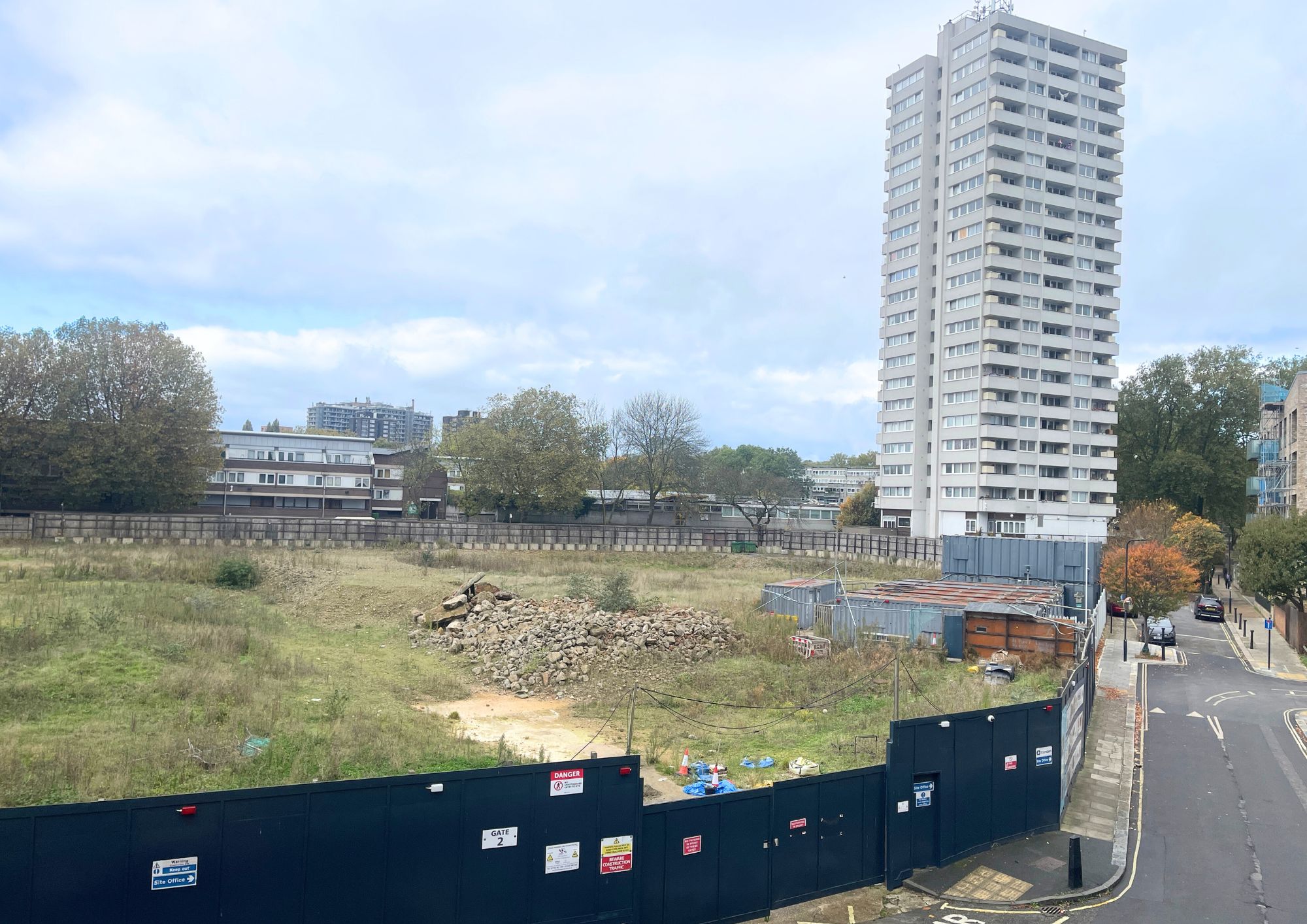Camden seeks to absolve itself from responsibility for planning new homes
Thursday, 7th November 2024

The land standing vacant near Bacton Low Rise
• IN your October 31 report on the proposed rebuild of Bacton estate phase 2, Frankie Lister-Fell refers to the developer’s “U-turn”, in changing the originally consented scheme of 247 homes to a completely different proposal for 447 homes, an apparent increase of 80 per cent (figures from Mount Anvil’s presentation).
However, it is not a “developer” that should be credited with this, but Camden Council.
It is the result of Camden giving up on direct delivery and entering into a deal with a private developer, riding roughshod over planning policy and seeking to absolve itself from responsibility.
The council was proud of its work developing the original masterplan, saying, “The project, designed by Karakusevic Carson Architects, is notable for the close involvement the tenants’ and residents’ association, the district management committee chair and local residents have had in developing the scheme.”
However, the original design, which varied from two to eight storeys, has now been discarded, with half of the original tenants not getting the benefit of the design they contributed to.
The replacement scheme is poorly designed, varying from four to 23 storeys, and does not have an architect credited. It contravenes planning policy in many ways; sadly, Camden seems happy with this.
The previous scheme relied on the “cross-subsidy” model, where the profit from construction of new homes for sale at a high price on the open market is used to rebuild existing council homes.
This has been Camden’s plan since 2010 with the CIP, community investment programme.
There are alternatives, but Camden chooses to ignore them.
Over the past decade the cross-subsidy model has been shown to be ineffective in providing the homes people need, resulting in a glut of high-cost homes unaffordable to local people.
In London many new flats are bought as investments, left empty or rented out at very high cost. As well as making the housing market even less affordable, the cross-subsidy model drastically changes the social mix that currently exists on council estates, resulting in an extreme form of “gentrification” antithetical to the idea of council housing.
The cross-subsidy model does not enable good planning of an area, as the number of homes being built depends on a financial equation rather than good planning policy.
So while in 2012 a total 176 expensive market homes were required to make the sums stack up, 12 years later this has increased to 353. Part of this increase is because the profit from the new market homes now has to cover the cost of the developer’s profit as well (typically around 20 per cent of the construction value).
The developer is consulting on behalf of Camden Council until November 16. Please go to https://bacton.govocal.com/en-GB/projects/bacton-phase-two to see the details of the scheme. The feedback form is at the bottom right corner of the first page.
ALICE BROWN
Bassett Street, NW5